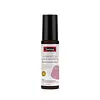What's inside
What's inside
 Key Ingredients
Key Ingredients

 Benefits
Benefits

 Concerns
Concerns

 Ingredients Side-by-side
Ingredients Side-by-side

Water
Skin ConditioningAscorbyl Glucoside
AntioxidantNiacinamide
SmoothingCoco-Caprylate
EmollientCaprylic/Capric Triglyceride
MaskingPropanediol
SolventIsononyl Isononanoate
EmollientAcetyl Glucosamine
Skin ConditioningGlycerin
HumectantBis-PEG-18 Methyl Ether Dimethyl Silane
EmollientFerulic Acid
AntimicrobialHydrogenated Polyisobutene
EmollientHelianthus Annuus Seed Oil
EmollientPhospholipids
Skin ConditioningPolyglyceryl-10 Stearate
Skin ConditioningC13-14 Isoparaffin
EmollientLaureth-7
EmulsifyingPolyacrylamide
Sodium Acrylates Copolymer
Acrylates/C10-30 Alkyl Acrylate Crosspolymer
Emulsion StabilisingSodium Citrate
BufferingPhenoxyethanol
PreservativeDisodium EDTA
Ethylhexylglycerin
Skin ConditioningCitric Acid
BufferingSodium Hydroxide
BufferingWater, Ascorbyl Glucoside, Niacinamide, Coco-Caprylate, Caprylic/Capric Triglyceride, Propanediol, Isononyl Isononanoate, Acetyl Glucosamine, Glycerin, Bis-PEG-18 Methyl Ether Dimethyl Silane, Ferulic Acid, Hydrogenated Polyisobutene, Helianthus Annuus Seed Oil, Phospholipids, Polyglyceryl-10 Stearate, C13-14 Isoparaffin, Laureth-7, Polyacrylamide, Sodium Acrylates Copolymer, Acrylates/C10-30 Alkyl Acrylate Crosspolymer, Sodium Citrate, Phenoxyethanol, Disodium EDTA, Ethylhexylglycerin, Citric Acid, Sodium Hydroxide
Water
Skin ConditioningGlycerin
HumectantPropanediol
SolventAlcohol
AntimicrobialPentylene Glycol
Skin ConditioningPolyglyceryl-10 Laurate
Skin ConditioningAcrylates/C10-30 Alkyl Acrylate Crosspolymer
Emulsion StabilisingCaprylyl Glycol
EmollientSodium Hydroxide
BufferingSalicylic Acid
MaskingCitrus Limon Fruit Extract
MaskingAscorbyl Glucoside
AntioxidantSodium Hyaluronate
HumectantLinalool
PerfumingLimonene
PerfumingGeraniol
PerfumingParfum
Masking
 Reviews
Reviews

Ingredients Explained
These ingredients are found in both products.
Ingredients higher up in an ingredient list are typically present in a larger amount.
Acrylates/C10-30 Alkyl Acrylate Crosspolymer is a synthetic polymer. It is used to thicken and improve the texture of products. Due to its properties, it can prevent water and oil ingredients from separating.
Ascorbyl Glucoside is a stable form of Vitamin C. It is created by combining glucose from starch.
When applied to skin, Ascorbyl Glucoside turns into Ascorbic Acid.
Ascorbyl Glucoside is an antioxidant. Antioxidants help fight free-radicals, or molecules that may damage skin cells.
It can help to reduce redness, improve skin texture, reduce the effects of aging, reduce the visibility of dark spots, and brighten skin.
Read more about other types of Vitamin C:
Learn more about Ascorbyl GlucosideGlycerin is already naturally found in your skin. It helps moisturize and protect your skin.
A study from 2016 found glycerin to be more effective as a humectant than AHAs and hyaluronic acid.
As a humectant, it helps the skin stay hydrated by pulling moisture to your skin. The low molecular weight of glycerin allows it to pull moisture into the deeper layers of your skin.
Hydrated skin improves your skin barrier; Your skin barrier helps protect against irritants and bacteria.
Glycerin has also been found to have antimicrobial and antiviral properties. Due to these properties, glycerin is often used in wound and burn treatments.
In cosmetics, glycerin is usually derived from plants such as soybean or palm. However, it can also be sourced from animals, such as tallow or animal fat.
This ingredient is organic, colorless, odorless, and non-toxic.
Glycerin is the name for this ingredient in American English. British English uses Glycerol/Glycerine.
Learn more about GlycerinPropanediol is an all-star ingredient. It softens, hydrates, and smooths the skin.
It’s often used to:
Propanediol is not likely to cause sensitivity and considered safe to use. It is derived from corn or petroleum with a clear color and no scent.
Learn more about PropanediolSodium Hydroxide is also known as lye or caustic soda. It is used to adjust the pH of products; many ingredients require a specific pH to be effective.
In small amounts, sodium hydroxide is considered safe to use. However, large amounts may cause chemical burns due to its high alkaline.
Your skin has a natural pH and acid mantle. This acid mantle helps prevent harmful bacteria from breaking through. The acid mantle also helps keep your skin hydrated.
"Alkaline" refers to a high pH level. A low pH level would be considered acidic.
Learn more about Sodium HydroxideWater. It's the most common cosmetic ingredient of all. You'll usually see it at the top of ingredient lists, meaning that it makes up the largest part of the product.
So why is it so popular? Water most often acts as a solvent - this means that it helps dissolve other ingredients into the formulation.
You'll also recognize water as that liquid we all need to stay alive. If you see this, drink a glass of water. Stay hydrated!
Learn more about Water